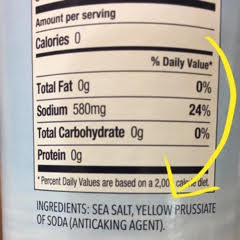Food quality is a hot topic right now. Nutrition authorities recommend grass-fed beef, organic produce and pastured poultry over conventional varieties of these foods. Surprisingly, the conversation of food quality also extends to salt. All salt originates from the sea, yet all salt is not equal. How can this be?
Sea salt, in its unrefined form, contains sodium chloride along with sulfur, magnesium, calcium, potassium and 60–65 trace minerals like zinc and iodine. Unrefined salt varies in color and taste depending on the balance of minerals and region of origin.
According to the Real Salt “Guide to Understanding Salt,” refined salt (aka table salt) is treated with chemicals and heat to remove the naturally occurring minerals leaving only sodium chloride in a white, crystalline powder. Once devoid of minerals, anticaking agents, dextrose (a refined sugar) and potassium iodide are added.
The body depends on sodium from salt for numerous functions, all of which require a delicate balance between sodium and other minerals. Nature packages sea salt with the complimentary minerals necessary for sodium to function optimally in our bodies. Our bodies are not designed to use the isolated sodium chloride in refined salt, especially isolated sodium chloride with added chemicals.
Clearly, the winner of the salt smack down is unrefined, mineral-rich sea salt.
Tips for choosing high-quality sea salt
- The label “sea salt” can be used for unrefined and refined varieties of sea salt. You must investigate further to identify high-quality sea salt.
- Look for the words “refined” or “unrefined” on the label. Always choose “unrefined.”
- Look at the color of the salt. Unrefined sea salt has flecks of color due to the mineral content.
- Check the ingredients for additives. Look out for anticaking agents like calcium silicate, yellow prussiate of soda (YPS), dextrose (a refined sugar) and potassium iodide.
- Celtic/Gray sea salt and Himalayan/Pink sea salt are often safe bets, but you still must check the label.


Related Articles
3 Ways to Restore Your Skin with Salt
Why You Should Buy a Salt Lamp Now!

